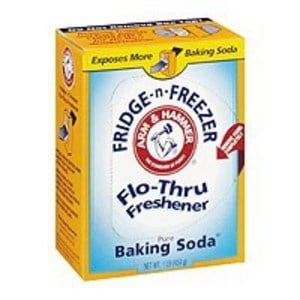According to the Merck Manual, pain is the most common reason people visit their doctors. Pain is an unpleasant sensation that occurs in various degrees and may be inflicted by injury, disease or an emotional disorder. Chronic pain is long-term pain that continues to persist even after healing has occurred or if the pain lasts 6 months or longer. The American Chronic Pain Association (ACPA) estimates that one in three Americans suffers from some type of chronic pain at an annual cost of $70 billion.
As a medical practitioner, I have to admit that nearly every single patient that I treat on a daily basis is due to some sort of pain. Managing pain is very difficult; naturally everyone has a different threshold and since this is a subjective (patient tells you) finding vs. an objective (can see it) finding, it becomes more of a challenge. Treating with some form of over the counter medication is always best such as ibuprofen and acetaminophen as a first line of treatment. However, this form of treatment does not seem to help most. Then the question arises as to what medication to try. This is where it can become a little difficult. There are many factors to consider and a good health care provider should be responsible for assessing and reviewing every patient individually before treating.
One of the most common class of medications used in treating pain are the opioids. An opioid is a chemical substance that has a morphine like action in the body. They are narcotic drugs that are frequently and generally prescribed for pain management. These drugs are the most powerful analgesics agents available today to manage pain. While these drugs in this category have helped relieve pain for millions of individuals, they have also been abused with serious life threatening consequences as most recently seen with actor Heath Ledger.
Most commonly abused pain medications in this category are codeine, hydrocodone, oxycodone, morphine, meperidine, hydromorphone, fentanyl, and methadone. While these medications can be great treating a patient short term they may have more severe consequences in treating the long term chronic pain sufferer. This is where it takes a lot more skill and knowledge on the health care provider in assessing and determining if a patient is an abuser to these medications or has developed an addiction to these drugs. Signs and symptoms of drug abuse or addiction can be observed by family and friends or it may be up to the health care provider to decide. There are some tell-tale signs that can be observed as acknowledged in health.allrefer
Signs and Symptoms of Drug Abuse:
– Recurrent substance use resulting in a failure to fulfill major obligations at home, work or school
– Recurrent substance use which is physically hazardous such as driving or operating machinery
– Recurrent substance use which leads to legal problems
– Continued substance use despite having persistent social or interpersonal problems that are enhanced by the drug
Signs and Symptoms of Drug Addiction:
– A need for increased amounts of the substance to achieve a certain desired effect
– A diminished effect with continued use of the same amount, therefore having to increase the substance amount
– Developing withdrawal symptoms after stopping or reducing the amount of drug (sweating, shaking, drug craving, nausea, vomiting, anxiety or confusion). It is important to note that the withdrawal symptoms of these drugs usually occur 4 to 12 hours after stopping heavy and prolonged use and may continue up to 14 days.
– Continued use of the substance to relieve withdrawal symptoms
– Substance is taken in larger amounts or over a long period than initially prescribed for
– Persistent desire to cut down, however unable to
– A great deal of time and effort is put in trying to obtain the substance (multiple physicians, friends or family)
– Important social or recreational activities are given up due to the substance use
– Continued substance use despite acknowledging that there is a physical dependency involved
So if you or someone you know have any of these signs or symptoms than it is necessary to speak to a health care provider or counselor as soon as possible to achieve proper management for both the pain, and addiction of this drug.
Treatment for opioid abuse is not easy for the drug user, family or friends. It requires time, patience and a lot of commitment. The right approach should involve research and individual assessing to determine the proper treatment and the quality of treatment that may be required to help. There are many resources for help readily available and Addiction Care Options can also offer some tips and advice on obtaining the proper treatment for a drug addiction.
Unfortunately, pain management can be a leading cause to a drug addiction so if you’re worried about medication addiction, be honest with your health care provider or physician. Share your concerns, including any personal or family history of substance abuse or addiction this information can be useful in choosing the type of pain medication that will work best for you.
Resources:
http://www.merck.com/mmhe/sec06/ch078/ch078a.html
http://www.theacpa.org/
http://en.wikipedia.org/wiki/Opioid
http://health.allrefer.com/health/opiate-withdrawal-info.html



